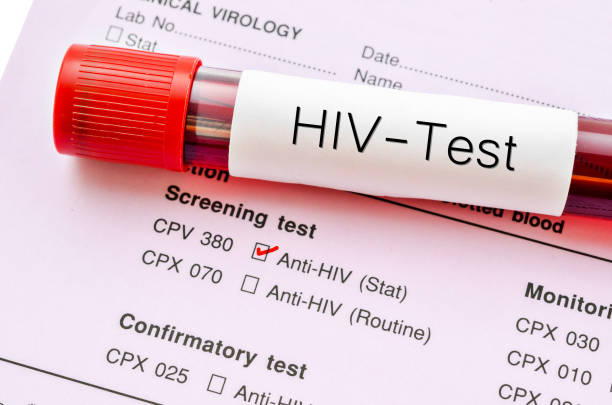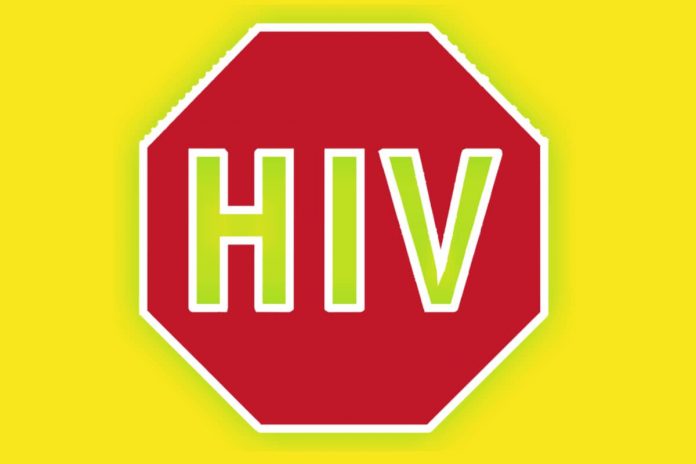Table of Contents
Symptoms of AIDS
AIDS (Acquired Immune Deficiency Syndrome) is caused by HIV (Human Immunodeficiency Virus). AIDS is not something that one can catch; one can become infected with HIV and may develop AIDS later. The only way to become infected with HIV is by certain types of contact with someone who has it.
The most common way to contract HIV is
- Having sex with an infected person
- Sharing needles with an infected person
- Being born when the mother is infected
- Drinking the breast milk of an infected women
The tests to check for HIV look for antibodies that the body has produced to fight the infection. The doctor will swap the mouth or draw blood and look for these HIV antibodies. Even if the test results come back HIV-positive, that does not mean that symptoms will start automatically. The symptoms may hold off for years, but they will wear down the immune system as the disease continues. When this does happen, the viruses, parasites, fungi, and bacteria that the body fights daily will become more problematic.
HIV becomes AIDS after it has seriously damaged the body’s immune system. During HIV treatment, the doctor measures the damage to the immune system by counting CD4 cells, or T-helper cells. These cells are very important to the immune system. If this count falls below 200 or less than 14%, AIDS is confirmed.
Symptoms of HIV/AIDS

The symptoms of HIV AIDS will depend on how progressive the disease is. Most people experience a flu-like illness within the first few months after being diagnosed. This is known as primary or acute HIV infection and will last a few weeks. Other symptoms will be:
- Fever
- Headache
- Muscle aches
- Rash
- Chills
- Sore throat
- Mouth or gentile ulcers
- Swollen lymph glands, mostly on the neck
- Joint pain
- Night sweats
- Diarrhea
These symptoms may be so mild that they might go unnoticed. But the amount of the virus in the blood is very high during this time. This causes HIV to spread more efficiently than during the next stage of the infection.
If there is no treatment for HIV infection, the disease will progress to AIDS over 10 years. By this time, HIV has severely damaged the immune system and has made the body susceptible to opportunistic infections. These infections are diseases that a person with a healthy immune system would have no trouble fighting.
Some of the symptoms of AIDS, or opportunistic infections, are:
- Soaking night sweats
- Shaking chills
- Fever higher than 100 F for multiple weeks
- Cough
- Shortness of breath
- Chronic diarrhea
- Persistent white spots or unusual lesions on the tongue or in the mouth
- Headaches
- Persistent, unexplained fatigue
- Blurred and distorted vision
- Weight loss
- Skin rashes or bumps
According to the CDC, the most common opportunistic infections are:
- Pneumocystis pneumonia, a type of lung infection
- Kaposi’s sarcoma, skin cancer
- Cytomegalovirus is an infection that affects the eyes
- Candida is a fungal infection that causes thrush in your mouth, throat, or vagina
Without the proper treatment, these symptoms of AIDS will be fatal.
AIDs will affect each person differently. Some may die a few months after being diagnosed, but most will live normal lives for many years, even after being diagnosed with AIDS. There are a few people with HIV who can stay healthy without using antiretroviral medications.
Stages of HIV
The symptoms of AIDS/HIV will depend on the infection stage. The early stage, about 2-4 weeks after the initial HIV infection, is when Who will experience the flu-like symptoms. This is called acute retroviral syndrome (ARS) or primary HIV infection. This will last from a few days to several weeks. But, because this mimics the flu, it is not a good way to tell if HIV is present or not. Many other illnesses can cause these symptoms. Also, some people with HIV may not develop ARS at all, and some may not have the symptoms for up to 10 years. The only way to be sure it is HIV is to be tested.
The clinical latency stage is next. The word latency means a period where the virus is living or developing in a person without producing symptoms. In this stage, the infected person will have no symptoms of aids/HIV. The virus is also reproducing at very low levels, but it is still active. If steps are being taken using antiretroviral therapy, this stage can last several decades. This is because these treatments help to keep HIV in check. For those who are not using the treatments, the stage can last up to 10 years, but some may go through this stage even quicker. An important note to remember is that even if one is symptom-free during this period, the disease can still transmit.
Sooner or later, the disease will progress to AIDS. This late stage is when the body is transiting from HIV to AIDS. The symptoms will worsen because the immune system has been damaged, and opportunistic infections will occur. However, even these symptoms can be related to other illnesses, so being checked by a doctor is the only way to know.
Symptoms of AIDS in Women
In the US, about two out of every three new cases of HIV are in women due to unprotected sex and sharing of drug needles.
Symptoms of aids in women will follow the same pattern. However, women will experience a problem with their reproductive health. Women will experience changes in their menstrual cycle or even an absence of their period. They will also have more bacterial and yeast infections than normal.
Women also have a greater risk of getting more sexually transmitted infections. These include:
- Chlamydia
- Trichomoniasis
- Gonorrhea
- Human papillomavirus (HPV), which causes genital warts and cervical cancer
- Pelvic inflammatory diseases (PID) may be resistant to treatment
Women with AIDS have an increased risk of getting aggressive cancers that will be more difficult to treat.
The CDC estimates that over one million people ages 13 and over living with HIV. Gay and bisexual men make up two-thirds of the 50,000 newly infected people each year. Also, African American men are at a greater risk of becoming infected.
Symptoms of AIDS in Men
Symptoms of aids in men will begin as a flu-like sickness. Then after about a week or two, there will be a rash on the arms, legs, face, or belly. Other symptoms include a sore throat, swollen lymph glands, and mouth or genital ulcers.
Often men’s HIV will follow a pattern. Acute illness, or early-stage, happens to about 70 percent of men. Then they will have the asymptomatic or clinical latency stage for up to 10 years when they will be symptom-free. Then the advanced infection, or full-on AIDS, will make the body susceptible to different diseases and illnesses.
About 41 percent of men patients are late testers, which means that they were diagnosed with Aids within a year of being diagnosed with HIV. Men need to be aware of their health and get tested immediately if they notice any symptoms or suspect they have become infected.
HIV/AIDS Treatment
There have been two cases of people who have been cured. But, there is no safe cure for HIV as of late. There is currently no way to rid the body of the HIV virus. The therapy can slow down and even help reverse the damage to the immune system. Many people will stay healthy if they stick with antiretroviral therapy.
Some drugs can treat or even prevent opportunistic infections (OI). ART has been shown to reduce the rate of OI, but most OIs are difficult to treat.
Doctors and researchers are working hard to find a cure for HIV/AIDS. But until that time, the only they could do was treat the symptom of AIDS. They had hope when a baby in Mississippi who tested positive for AIDS was given treatment medications and was HIV-free for almost 2 years, but now it has returned. Even with this setback, what they did learn will help with HIV/AIDS research.
Another problem is that treating and curing babies is easier because they can be tested and monitored right after birth. Most adults don’t know when they became infected. Also, if an adult does test positive, the doctors want to start treatment immediately and ask questions later. HIV/AIDS is great at hiding in the body, and until tests become better at finding those “hiding spots,” doctors will not be able to label people HIV-free.




